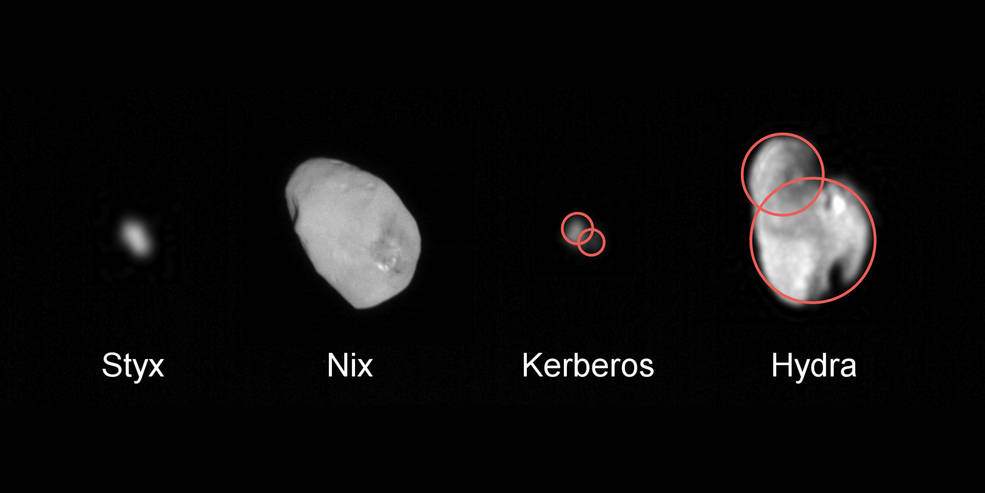Possible Ice Volcanoes and Dozens of Other Discoveries Made By New Horizons
At the 47th Annual Meeting of the American Astronomical Society’s Division for Planetary Sciences, the New Horizons Science team is discussing a treasure trove of over 50 discoveries in the Pluto system, ranging from ice volcanoes on Pluto to the chaotic motion of its moons.
“The New Horizons mission has taken what we thought we knew about Pluto and turned it upside down,” said Jim Green, director of planetary science at NASA Headquarters in Washington. “It's why we explore ... to satisfy our innate curiosity and answer deeper questions about how we got here and what lies beyond the next horizon."
Cryovolcanism
One of the discoveries is the possibility of ice volcanoes. Two mountains on Pluto were identified as candidates. Each stands several kilometers high above Pluto's surface.

"These are big mountains with a large hole in their summit, and on Earth that generally means one thing -- a volcano,” said Oliver White, New Horizons postdoctoral researcher at NASA’s Ames Research Center in Moffett Field, California. “If they are volcanic, then the summit depression would likely have formed via collapse as material is erupted from underneath. The strange hummocky texture of the mountain flanks may represent volcanic flows of some sort that have traveled down from the summit region and onto the plains beyond, but why they are hummocky, and what they are made of, we don't yet know.”
A Geologically Active World
Another finding was that Pluto's surface varies in age - from relatively young to ancient. This information was acquired by counting the number of crater impacts on Pluto's surface. Younger regions have fewer impacts than older ones.

“We’ve mapped more than a thousand craters on Pluto, which vary greatly in size and appearance,” said postdoctoral researcher Kelsi Singer, of the Southwest Research Institute (SwRI) in Boulder, Colorado. “Among other things, I expect cratering studies like these to give us important new insights into how this part of the solar system formed.”
The Chaotic Motion Of Pluto's Moons
Pluto's moons - unlike most moons in the solar system - are not in synchronous rotation. That is, they don't keep the same face toward the planet as they orbit. They also behave like spinning tops, wobbling much more than expected.
Another finding suggests that some of the small moons were formed by the merger of two or more moons.

All of these findings and dozens more are being presented at this week's 47th Annual Meeting of the American Astronomical Society’s Division for Planetary Sciences. To view more slides and graphics of the findings, click here.
For the original Pluto press release, click here.







